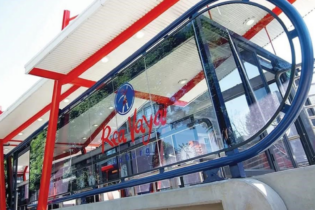The African Development Bank has release a report stating that delays at Southern African border posts are hampering the potential growth of intra-African trade.
There are identical procedures on each side of the border to follow which include; customs, immigration, police, agriculture and health. These procedures are costing traders millions of dollars. “The multiplicity of those agencies operating on both sides of the same border doubles the bureaucracy … , which translates into congestion and delays,” said the bank’s chief economist and vice president, Professor Mthuli Ncube. “The cumbersome procedures in customs processing can cost a consignment about US$185 for each day of delay.” Prof Ncube also mentioned that these delays could be as long as 3 days which opened the floodgates to corruption, another factor which drives the cost of trade up. “For instance, traders (or) trucks have to wait about 36 hours at the SA-Zimbabwe border post (Beitbridge). In Southern Africa, customs delays cost the region about US$48 million per year,” Prof Ncube said. Poor trade facilitation makes up 75% of border delays whilst 25% of delays are because of infrastructure. The World Bank estimates that intra-Africa trade could double intra-regional trade by easing non-tariff barriers, including customs procedures and poor transport infrastructure, helping boost economic growth. A trade expert, Mr Gift Mugano, said in an interview yesterday “simplification and harmonisation” of procedures can eradicate the problem.He said the delays and bureaucratic approach to trade make African transport, on average, three times more expensive than South American transport and five times more expensive than Asian transport.
“This definitely affects the competitiveness of African goods on the international markets,” said Mr Mugano, a PhD student in economics at Nelson Mandela Metropolitan University in South Africa. “This obviously affects the competitiveness of our exports and hampers intra-regional trade as our own products are constantly being displaced out of the market by international products from Asia, Europe and other Western countries. “This is evidenced by low intra-Comesa trade of about US$15 billion. Comesa has a population of more than 400 million people with an estimated Gross Domestic Product of US$300 billion which presents huge market opportunities and great scope for trade.” He said lessons could be drawn from the Chirundu One-Stop Border Post. Before the one stop border post was established, 268 commercial trucks, 45 private vehicles and eight passenger coaches on average, were processed each day. Now, the average number of vehicles has gone up to between 300 and 400 per day. “The streamlining and harmonisation of border procedures at Chirundu has resulted in the significant reduction of processing times,” said Mr Mugano. “The clearance times for buses have been reduced by half while private vehicles now take 20 to 30 minutes compared to the previous one hour.”






